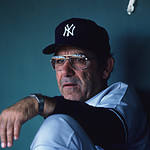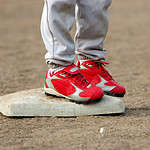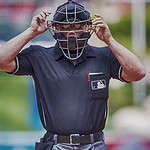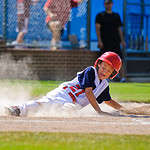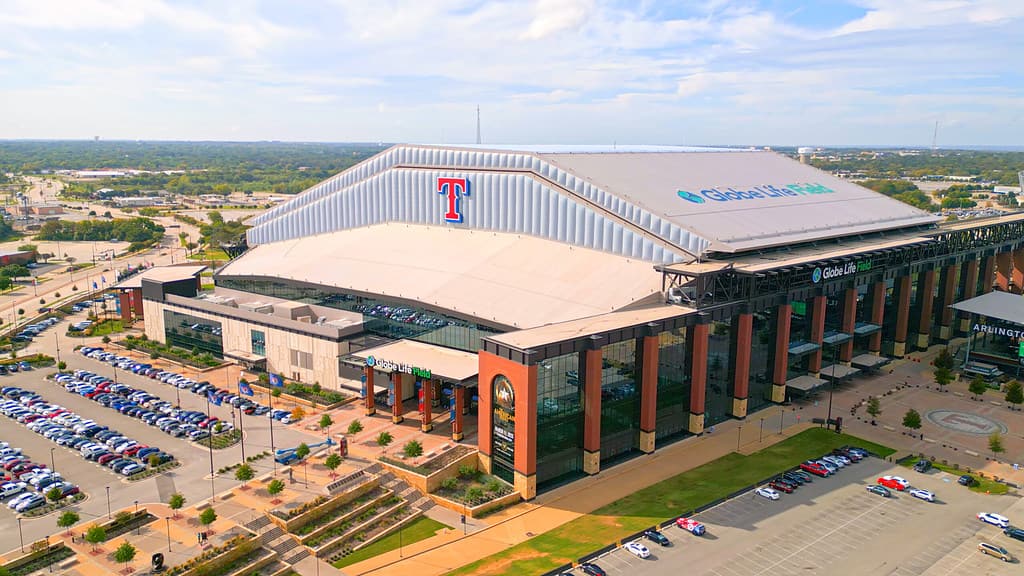Baseball is a sport that requires a wide range of skills from its players. From hitting to fielding, each position on the field demands a unique set of abilities. While every role is important, some positions are considered to be more challenging than others. In this article, we will explore the hardest position in baseball and examine why it is so difficult to play.
Many baseball experts and enthusiasts consider the catcher position to be the most challenging on the field. Catchers are responsible for calling pitches, managing the defense, and making split-second decisions that can determine the outcome of the game. Additionally, they must have excellent hand-eye coordination, quick reflexes, and a strong arm to throw out base runners. Catchers are often required to play through injuries, as the position puts a significant amount of stress on the body.
Despite the challenges, some players are drawn to the catcher position because of the unique role it plays in the game. Catchers are often considered to be the leaders of the defense, and their ability to read the opposing team’s offense can give their team a significant advantage. While it may be the hardest position in baseball, many players relish the opportunity to take on the challenge and make a difference on the field.
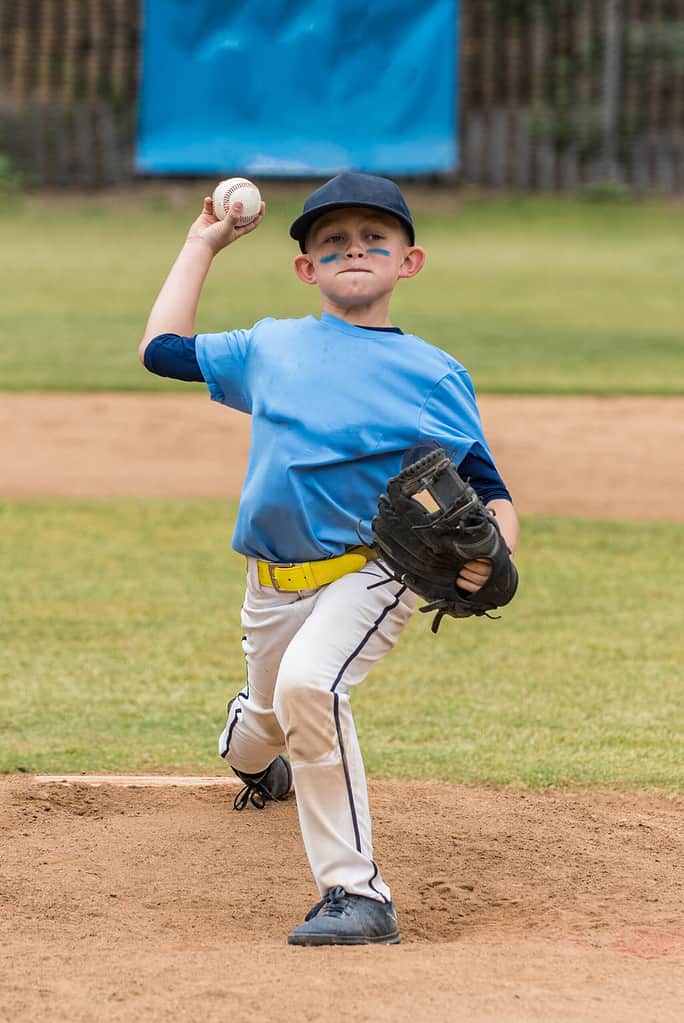
Understanding Baseball Positions
Baseball is a sport that requires a team effort to win, and each player has a specific role to play. Understanding the different positions in baseball is essential to appreciate the game and follow the action on the field.
Infield Positions
The infield positions are located in the inner part of the baseball diamond. There are four infield positions: first base, second base, third base, and shortstop.
- First Base: The first baseman is responsible for catching throws from other infielders and covering first base during plays. They also need to be able to catch pop-ups and grounders hit to their area.
- Second Base: The second baseman is responsible for covering second base during plays and turning double plays. They also need to have quick reflexes and good footwork to field grounders hit to their area.
- Third Base: The third baseman is responsible for covering third base during plays and fielding grounders hit to their area. They also need to have a strong arm to make throws across the diamond.
- Shortstop: The shortstop is responsible for covering second base during plays and fielding grounders hit to their area. They also need to have quick reflexes and good footwork to make plays in the field.
Outfield Positions
The outfield positions are located in the outer part of the baseball diamond. There are three outfield positions: left field, center field, and right field.
- Left Field: The left fielder is responsible for catching fly balls hit to their area and throwing the ball back to the infield. They also need to be able to field grounders hit to their area.
- Center Field: The center fielder is responsible for catching fly balls hit to their area and covering a large portion of the outfield. They also need to have a strong arm to make throws to the infield.
- Right Field: The right fielder is responsible for catching fly balls hit to their area and throwing the ball back to the infield. They also need to be able to field grounders hit to their area.
Understanding the different positions in baseball is crucial to appreciate the game and follow the action on the field. Each position requires specific skills and abilities, and players need to work together to win the game.
The Role of the Pitcher
Pitchers are considered the backbone of any baseball team. They are the ones responsible for throwing the ball to the opposing team’s batters, with the goal of getting them out. The pitcher position is considered one of the hardest positions in baseball, and for good reason.
Pitchers have to be able to throw a variety of pitches, including fastballs, curveballs, sliders, and changeups, among others. They also have to be able to throw these pitches with accuracy and consistency. The ability to throw strikes and get batters out is crucial for any pitcher, regardless of whether they are a starter or a reliever.
Starters are pitchers who begin the game and usually pitch for several innings. They are expected to pitch well and keep the opposing team from scoring runs. Relievers, on the other hand, come in later in the game and pitch for shorter periods of time. They are expected to maintain the lead that the team has established and prevent the opposing team from scoring.
Pitchers also have to be able to read the game and make adjustments accordingly. If a particular pitch is not working, they need to be able to switch to a different pitch that will be more effective. They also need to be able to adjust their pitching style based on the opposing team’s batting style and strengths.
In conclusion, the role of the pitcher is crucial to any baseball team’s success. Pitchers have to be able to throw a variety of pitches with accuracy and consistency, read the game, make adjustments, and prevent the opposing team from scoring runs. It is a challenging position that requires skill, knowledge, and experience.
The Importance of the Catcher
The catcher is arguably the most important position in baseball. While each position has its own unique challenges and responsibilities, the catcher is responsible for a variety of tasks that are crucial to the success of the team.
One of the most demanding aspects of the catcher position is the physical toll it takes on the body. Catchers spend a significant amount of time crouched down behind home plate, which puts a lot of strain on their knees and back. In addition, catchers are often hit by foul balls or errant pitches, which can be incredibly painful and even dangerous if they don’t have the proper protective equipment.
But the catcher’s responsibilities go far beyond just protecting themselves. They are also responsible for calling pitches, which requires a deep knowledge of the opposing team’s hitters and the strengths and weaknesses of their own pitchers. A good catcher can help their pitcher navigate a tough inning and get out of a jam, while a bad catcher can make things much more difficult.

The catcher is also responsible for controlling the game and managing the baserunners. They need to be aware of the speed and skill of each runner, and be able to make split-second decisions about whether to throw to second or third base to prevent a steal. They also need to be able to block pitches in the dirt and make quick throws to catch runners trying to steal home.
Overall, the catcher is a vital part of any baseball team, and their importance cannot be overstated. While it may be one of the hardest positions in the game, a skilled and knowledgeable catcher can make all the difference in a close game.
The Challenges of the Infield
Playing in the infield is one of the toughest positions in baseball. Infielders need to have excellent range, quick reflexes, and the ability to make split-second decisions. The infield is also known as the “diamond,” and it is where most of the action takes place during a game.
The infield is divided into four positions: first base, second base, shortstop, and third base. Each position has its own set of challenges, but they all require a high level of skill and concentration.
The third baseman is often referred to as the “hot corner” because they are responsible for fielding hard-hit ground balls and making quick throws to first base. They need to have excellent range and quick reflexes to handle the ball when it comes their way.
The second baseman is also an important position in the infield. They need to have quick feet and a good range to cover a lot of ground. They are also responsible for turning double plays, which requires excellent timing and coordination with the shortstop.
The shortstop is often considered the most challenging position in the infield. They need to have excellent range, quick reflexes, and the ability to make accurate throws to first base. They also need to be able to read the batter’s swing and anticipate where the ball will be hit.
First base is the least challenging position in the infield, but it still requires skill and concentration. First basemen need to be able to catch throws from other infielders and make accurate throws to other bases. They also need to be able to field ground balls and cover the bag when necessary.
Infielders need to be able to field ground balls cleanly and make accurate throws to other bases. They also need to be able to anticipate where the ball will be hit and position themselves accordingly. Overall, playing in the infield requires a high level of skill and concentration, and it is one of the toughest positions in baseball.
The Demands of the Outfield
Playing in the outfield is one of the most challenging positions in baseball. Outfielders are responsible for catching fly balls hit by the opposing team and making outs. They need to have excellent hand-eye coordination, speed, and agility to cover the large area of the outfield.
Center Field
Center field is considered the most difficult position in the outfield. The center fielder is responsible for covering the most ground and catching the most fly balls. They need to have a strong arm to make accurate throws to the infield and prevent runners from advancing.
Right Field
Right field is also a challenging position in the outfield. The right fielder needs to have a strong arm to make throws to third base and home plate. They also need to be quick and agile to cover the large area of the outfield.
Fly Balls
Catching fly balls is one of the most important responsibilities of outfielders. They need to be able to judge the trajectory of the ball and position themselves accordingly. Outfielders also need to be able to track the ball as it moves through the air and adjust their position as needed.
Outs
Outfielders are responsible for making outs by catching fly balls or throwing the ball to the infield. They need to be able to make quick and accurate decisions to prevent runners from advancing or scoring.
In conclusion, playing in the outfield is one of the most difficult positions in baseball. Outfielders need to have excellent hand-eye coordination, speed, and agility to cover the large area of the outfield. Center field and right field are considered the most challenging positions in the outfield.
The Pressure and Skill Required
Playing any position in baseball requires a unique combination of physical and mental skills. However, some positions are more challenging than others. In particular, playing the shortstop position is widely considered to be one of the hardest positions in baseball.
Pressure
The shortstop position is known for its high-pressure situations. The shortstop must be able to handle the pressure of making quick decisions and accurate throws in the face of a fast-paced game. Additionally, the shortstop must be able to handle the pressure of being responsible for the defense of the infield.
Defense
Playing shortstop requires a high level of defensive skill. The shortstop must have quick reflexes and be able to move quickly to field ground balls and line drives. They must also have a strong arm and be able to make accurate throws to first base.
Action and Control
The shortstop is involved in a lot of the action on the field. They must be able to control the pace of the game and make quick decisions about where to throw the ball. Additionally, the shortstop must be able to control their own movements and position themselves in the right place to make a play.
Speed and Endurance
Playing shortstop requires a lot of speed and endurance. The shortstop must be able to move quickly to field balls and make plays. They must also be able to run quickly to cover ground and make plays in the outfield. Additionally, the shortstop must be able to maintain their energy and focus throughout the game.
Mental Pressure
Playing shortstop is mentally demanding. The shortstop must be able to handle the pressure of making split-second decisions and executing plays under pressure. They must also be able to stay focused and alert throughout the game.
Physically Demanding
Playing shortstop is physically demanding. The shortstop must be able to move quickly and make quick, explosive movements. They must also be able to maintain their strength and endurance throughout the game.
Intelligence and Confidence
Playing shortstop requires a high level of intelligence and confidence. The shortstop must be able to read the game and anticipate plays. They must also be able to communicate effectively with their teammates. Additionally, the shortstop must be confident in their abilities and able to make split-second decisions without hesitation.
Overall, playing shortstop in baseball is a challenging and demanding position that requires a unique combination of physical and mental skills.
The Role of Coaches and Strategy
Coaches play a vital role in baseball, especially when it comes to strategy. They are responsible for understanding the strengths and weaknesses of their team and the opposing team, and then developing a game plan that maximizes their chances of winning.
Offense is a key aspect of baseball, and coaches must have a deep understanding of it. They need to know the strengths and weaknesses of each player on their team, and how to use them to their advantage. They must also understand the tempo of the game and know when to be aggressive and when to be patient.
Another important role of coaches is to teach their players the importance of the cutoff man. The cutoff man is a player who stands in between the outfielder and the base, and is responsible for catching the ball and throwing it to the appropriate base. The cutoff man can be the difference between a run being scored or an out being made, so coaches must teach their players how to execute this skill effectively.
Captains play an important role on the team, and coaches must work with them to ensure that they are leading effectively. Coaches must also understand the opposing team and develop a game plan that takes into account their strengths and weaknesses.
In conclusion, coaches play a crucial role in baseball strategy. They must have a deep understanding of the game, including offense, tempo, the cutoff man, and the opposing team. With their knowledge and guidance, players can achieve success on the field.
Advanced Metrics and Analysis
When it comes to determining the hardest position in baseball, advanced metrics and analysis play a crucial role. Sabermetrics, a term coined by Bill James, has revolutionized the way we evaluate players and positions in baseball. By using statistical analysis, we can gain a deeper understanding of a player’s value beyond traditional statistics like batting average or ERA.
One important metric to consider when evaluating defensive positions is the defensive spectrum. This spectrum ranks positions based on their defensive importance, with shortstop and catcher being the most demanding positions. According to this spectrum, center field, second base, and third base are also considered to be challenging positions.
While talent is certainly a factor in excelling at any position, it’s important to note that some positions require a specific set of skills and attributes. For example, catchers need to have excellent communication skills, be able to read hitters and pitchers, and have quick reflexes. Shortstops need to have quick hands, excellent footwork, and be able to make accurate throws from a variety of angles.
In addition to the unique challenges that each position presents, there are also external factors that can make a position more difficult. For example, playing in a large ballpark with tricky wind patterns can make playing center field more challenging. Similarly, playing for a team with a weak pitching staff can make a catcher’s job more difficult.
In conclusion, while all positions in baseball require skill and focus, some positions are undeniably more challenging than others. By using advanced metrics and analysis, we can gain a deeper understanding of the unique demands of each position and appreciate the difficulty of playing these difficult baseball positions.
Specific Challenges of Pitching
Pitching is considered by many to be the hardest position in baseball due to the unique set of challenges it presents. Pitchers must have a combination of athleticism, physical strength, and a diverse repertoire of pitches to be successful.
One of the most significant challenges for a pitcher is facing opposing batters. Each batter has different strengths and weaknesses, and pitchers must understand how to exploit them. They must also be able to adjust their pitch selection and location based on the count and situation in the game.
Another challenge for pitchers is the physical toll that pitching takes on their bodies. Pitchers must have the strength and endurance to throw over 100 pitches in a game, often with little rest between starts. The pitcher’s mound is also a unique challenge, as it requires a different approach to pitching than throwing from flat ground.
Pitchers must also be able to handle the mental pressure of the game. They often find themselves in high-pressure situations, such as with the bases loaded or with the game on the line. They must remain focused and confident in their abilities to succeed.
In terms of specific pitches, the fastball and slider are two of the most challenging pitches to master. The fastball requires both velocity and accuracy, while the slider requires a precise release point to achieve the desired movement. Pitchers must also be aware of foul balls, which can quickly tire them out and extend at-bats.
In summary, pitching in baseball is a challenging position that requires a combination of physical and mental skills. Pitchers must be able to adjust to different batters, handle the physical demands of the game, and remain focused under pressure.
Frequently Asked Questions
What is the hardest position to play on the baseball field?
The hardest position to play on the baseball field is subjective and depends on individual skill sets. However, many people consider the shortstop, center fielder, and catcher to be some of the most challenging positions due to their high level of responsibility and the need for a combination of speed, agility, and accuracy.
Is catcher or pitcher harder?
Both catcher and pitcher are challenging positions in baseball, but they require different skill sets. Pitchers need to have strong arms and good control, while catchers need to have quick reflexes and excellent communication skills to work with the pitcher and direct the defense. Ultimately, it depends on the individual player’s strengths and weaknesses.
Where do you put your weakest player in baseball?
There is no one-size-fits-all answer to this question, as the weakest player’s position will depend on their specific strengths and weaknesses. However, coaches often put weaker players in less demanding positions, such as right field or first base, to minimize the risk of errors.
What is the most important position in baseball?
Every position in baseball is important, but some argue that the pitcher is the most crucial. The pitcher has a significant impact on the outcome of the game, as they are responsible for throwing the ball and setting the tone for the defense.
Is shortstop a good position in baseball?
Shortstop is an essential position in baseball, and many consider it to be one of the most challenging. Shortstops need to have quick reflexes, excellent fielding skills, and the ability to make accurate throws to first base. A good shortstop can make a significant impact on the game.
- UCLA Softball: Let’s Go Bruins! - February 12, 2024
- Youth Softball Helmet Buying Guide: Keep ‘Em Safe - February 12, 2024
- Youth Softball Pants: Our Top Picks for Your Top Player - February 12, 2024

